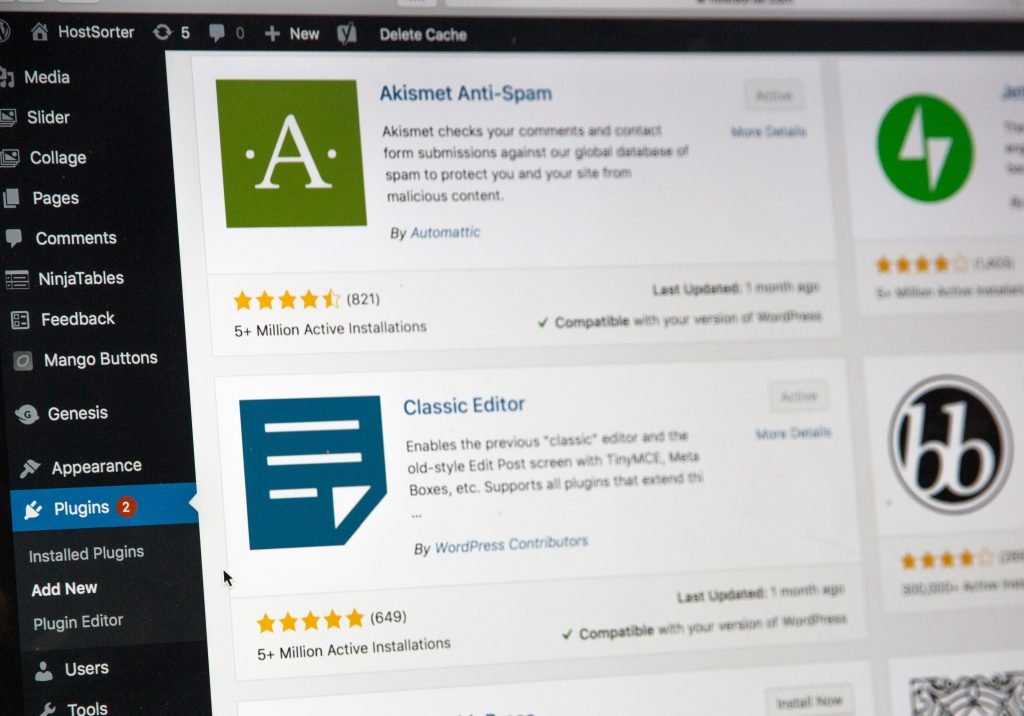Websites are the reason the Internet looks how it does. Currently, there are more than 1.2 billion websites on the web. But what is even more impressive, is the number of websites launched every day – not less than 250000 on average, according to Siteefy. Of course, back in the days, nobody could even dream that the world wide web would become that popular and important for our daily lives.
A few decades ago, creating a page on the internet required HTML knowledge and at least basic programming experience. Right, you could buy a guidebook and learn how to create one in a week. Yet, it’s still nowhere near the level of simply creating a page requires today.
That’s because there are a few ways to create a website:
- Developing one from scratch using your own web development skills
- Utilizing special builders to do most of the job for you
- Hiring specialized services who will develop and support the project
Let’s start with the easiest, and probably the most rational and cost-effective option of the three.
Contents
Hiring Professional Services
Your first step in receiving your own page on the internet is to find the right service. A basic search will reveal that there are thousands of companies on the market. The best option is to turn to professionals like Develux, who have many years of experience, provide only the best quality of their services, and have a flawless reputation. They truly know how to put your money to good use, so that you receive a perfect website.
So, the first thing you need to do is create a list of requirements. Of course, you can do it after contacting the professionals. But it’s better to have this list beforehand so that they can start developing a project for you as soon as possible. Come up with the main idea and goal of your project, and at least the general look of it.
Don’t worry if you have no knowledge in this sphere at all. Their expert support service will be glad to answer any of your questions to guide you through the whole process. It’s also important to know that after the product is finished, your project will receive professional technical support from the company you hired. This ensures that any bugs and issues will be fixed, and the updates will be made if requested.
When it comes to the price, it is higher than doing everything yourself or utilizing free website building software. But this is a perfect option for those who value their time and aren’t ready to study web development just for a single project. Also, this investment pays for itself in the long term, as professionally developed projects have flawless quality and are almost guaranteed to bring revenue. Provided the idea behind them is profitable, of course.

Using Special Software
Today, there are countless Popular Website Types. Some of them were developed on Python, some on JavaScript, some were bought as ready products, and some were created with the use of special software. Now you may think that this special software is something that looks like the windows command console or programming IDE.
Yet, it’s pretty much the opposite. The goal of website building programs is to make the whole experience as accessible and simple as possible. Most of the blogs and student websites are usually created with the use of such software. The most common and well-known examples are:
- WordPress
- Wix
- Squarespace
- Shopify (for online stores)
- Joomla
What these platforms offer, is the premade layouts of the websites and content management systems. There are thousands of different options to choose from. Some of them are free, some need to be bought, and some come with a subscription fee. The most recommended option is to use WordPress, as it has a lot of different themes and layouts, and is very simple to use.
Step 1: Domain and Hosting
The first step when creating your own page on the internet is to register the domain. Just find a domain vendor, and pay for registering your domain name. Please note that popular names and their look-alikes may be sold for a much higher price than average.
Next, find the hosting company that will provide you with a server for the site. This ensures that your project will be visible and accessible to anyone on the web at any time.
Step 2: Set Up the Website
Most hosting companies nowadays have a very easy one-click installation for those who use WordPress. The chances are, if you’re new to this field and decided to use WordPress, then you probably choose the hosting company that does provide this option. So, just press the button, and the integrated software will do everything for you
Step 3: Choose Layout
Now, it’s time to make the pages themselves. Start with choosing the theme you like. As said before, there are many different variants, so you’ll surely find the right one. Keep in mind that it not only determines the design solutions, but also the placement of all the elements on your pages.
Step 4: Create Sections
Most projects on the web consist of more than a single page. So, it’s important to divide the website into sections and pages. WordPress provides an option to put different layouts on different pages, so it’s really easy to create anything you might come up with. Don’t forget to organize everything efficiently too. That means that some pages should be easier to access than the others, to ensure that they serve their roles.
Step 5: SSL
SSL stands for Secure Sockets Layer and makes sure that anyone who accesses your website won’t have any chances of accessing classified data and the technical side of the project. Just find the respective feature in WordPress and configure it. There are many different free SSL certificates available there, so it won’t be any hard.
Step 6: Launch
That’s it, you’ve done everything that’s needed to create a website. Now the only thing that is left is to launch it. Find the “Coming soon active” button, press it, and then find the large blue button that says “Launch Your Site”.

Developing It Yourself
If you want to create the whole project yourself, then you’ll have to learn at least a single programming language. Unfortunately, such a complex process can’t be explained in a simple article like this, because it requires hundreds of hours of expert knowledge and practice. Consider using special courses or find dedicated resources to learn how to do it.
To have at least a general understanding of what it requires, here’s a general plan of the development process:
- Domain and Hosting
- Come up with the design and the general look
- Develop the back-end
- Develop the front-end
- Implement them
- Test
- Repeat 3-4 if needed until everything works as intended
- Launch
- Support (bug fixes, upgrades)
Final Words
As you can see, becoming a proud web page owner isn’t that hard as may seem. Of course, creating one from scratch still requires a lot of practice. But today, more simple and effective options exist. They are especially valuable for those, who don’t plan on becoming professional developers. So, just hire professionals to do the job for you, or use the website builders to make the whole process as easy as possible. Good luck!



































 Online casino
Online casino
